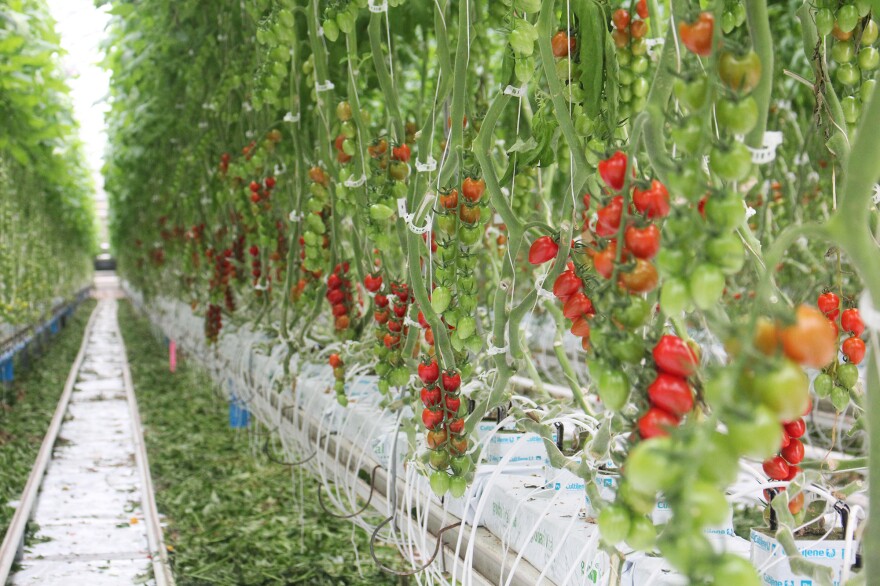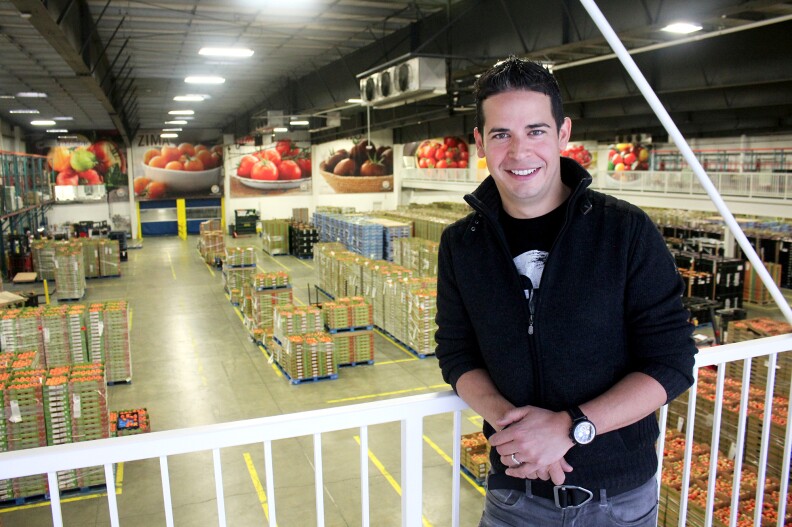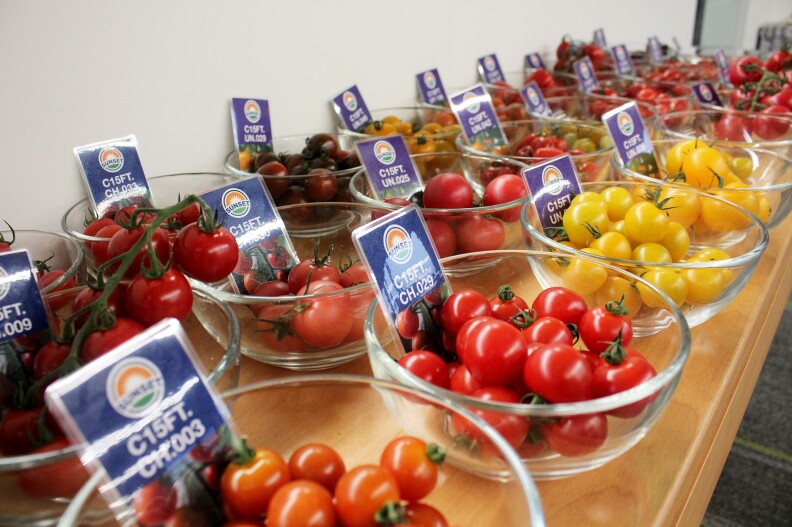With our free press under threat and federal funding for public media gone, your support matters more than ever. Help keep the LAist newsroom strong, become a monthly member or increase your support today .
How Canada Became A Greenhouse Superpower

If you're a home gardener in most of the country, your tomato plants are probably just getting started. It's not even officially summer.
Yet if you go to the grocery store, you'll probably see tomatoes that come from even farther north: Canada!
Our cold-weather neighbor sends us more tomatoes, peppers and cucumbers than we send the other way. Despite all the vegetable fields of California and Florida.
When I discovered this fact, I was so shocked that I decided to investigate.

I drove across the Ambassador Bridge from Detroit into Canada and headed southeast toward the city of Leamington.
It was a chilly, slate-gray day in spring. But within an hour I started seeing the vegetable fields. They were indoors. Plants were flourishing inside vast see-through structures made of glass or plastic. Some of the greenhouses covered 50 acres; that's an area bigger than 30 football fields.
This is the main reason why Canada sends us so many tomatoes. It's the biggest concentration of greenhouses in North America.
"The Leamington area probably has about 1,500 acres of greenhouse production," says Paul Mastronardi, CEO of Mastronardi Produce Sunset Grown, a big vegetable grower here.

Mastronardi says it all came from a decision his grandfather made in the 1940s. Umberto Mastronardi had been growing vegetables here the regular way, in open-air fields.
"He had a trip over to Europe and saw greenhouses in Holland, and he said, 'That'll work in Leamington. Let's get [away from] the weather controlling our destiny,' " says Mastronardi.
In heated greenhouses, he could grow vegetables for most of the year.
The technology spread quickly through two different tightly knit communities in Leamington: the Italians and the Mennonites. Over the years, the greenhouses got bigger and more sophisticated.
Paul Mastronardi takes me inside one of his company's greenhouses. It's comfortably warm. The entire floor is smooth concrete. Endless rows of green tomato vines are hanging on lines from the ceiling; the vines reach 10 or 15 feet into the air.
"All the ripe fruit are basically at my waistline," Mastronardi says. "There's no bending, no ergonomic issue with harvesting the crop."
Each giant plant emerges from a small box that sits on top of a larger bag. The tomato plant's roots are in the bag, intertwined with crushed rock. A thin plastic tube also goes into that bag. That's how the plant gets water and nutrients.
Mastronardi says it's possible to harvest 10 or 20 times more tomatoes from an acre of land in a greenhouse like this than from an acre of open field.

It's still more expensive to grow tomatoes this way compared with open fields.
But Dave Harrison, editor of Greenhouse Canada magazine, says greenhouse operators can charge more for their tomatoes because "greenhouse produce has always been seen as a premium product." That's because the fruit is protected, and you can treat it more gently. "It's always picked at its prime, and I think consumers picked up on that very quickly. It was fresh," he says.
In recent years, Canadian greenhouse producers have led the way into new kinds of tomatoes, like those little ones that you can just pop into your mouth. "They've diversified so much into specialty mini-products," Harrison says. "The mini-tomatoes that you see, the grape tomatoes, cocktail tomatoes."
The United States hasn't developed a big greenhouse industry because it didn't need to. It had all those warm-weather fields in Florida or California.
That's now changing as American growers go after the high-end tomato market. Big new greenhouses are up and running in Michigan, Ohio and Texas. But many of the people running those greenhouses are Canadians who learned their trade in Leamington.
Copyright 2023 NPR. To see more, visit https://www.npr.org. 9(MDA1OTI3MjQ5MDEyODUwMTE2MzM1YzNmZA004))
At LAist, we believe in journalism without censorship and the right of a free press to speak truth to those in power. Our hard-hitting watchdog reporting on local government, climate, and the ongoing housing and homelessness crisis is trustworthy, independent and freely accessible to everyone thanks to the support of readers like you.
But the game has changed: Congress voted to eliminate funding for public media across the country. Here at LAist that means a loss of $1.7 million in our budget every year. We want to assure you that despite growing threats to free press and free speech, LAist will remain a voice you know and trust. Speaking frankly, the amount of reader support we receive will help determine how strong of a newsroom we are going forward to cover the important news in our community.
We’re asking you to stand up for independent reporting that will not be silenced. With more individuals like you supporting this public service, we can continue to provide essential coverage for Southern Californians that you can’t find anywhere else. Become a monthly member today to help sustain this mission.
Thank you for your generous support and belief in the value of independent news.

-
Immigration raids have caused some U.S. citizens to carry their passports to the store, to school or to work. But what documents to have on you depends on your citizenship.
-
The historic properties have been sitting vacant for decades and were put on the market as-is, with prices ranging from $750,000 to $1.75 million.
-
Users of the century old Long Beach wooden boardwalk give these suggestions to safely enjoy it.
-
The Newport Beach City Council approved a new artificial surf park that will replace part of an aging golf course.
-
The utility, whose equipment is believed to have sparked the Eaton Fire, says payouts could come as quickly as four months after people submit a claim. But accepting the money means you'll have to forego any lawsuits.
-
The City Council will vote Tuesday on a proposal to study raising the pay for construction workers on apartments with at least 10 units and up to 85 feet high.







